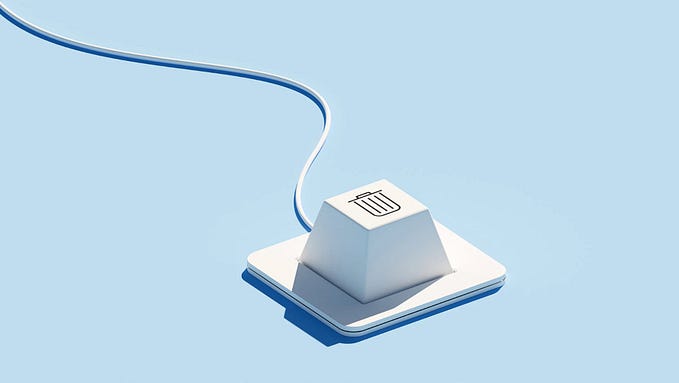What I’ve Learned About Design Thinking and Why Being a Migrant Helped Me

When I showed up to the first class of my Master of Design at The University of Sydney, I knew little about design thinking. But I also knew little about everything else. I had landed in Australia for the first time two weeks prior, I knew no one and it was my first time doing a degree in English. Nonetheless, all this helped me become a better designer.
We Are Designing Ourselves All the Time
Design isn’t just about creating products and services. It’s also about designing ourselves. We are constantly iterating and improving ourselves to become better versions of who we are. This is a process that requires empathy, creativity, and iteration — the same skills that are essential in design thinking.
It is a way of thinking, a mindset. You have to immerse yourself in a problem to get a deep understanding of it, and then create solutions that fit the problem’s requirements. Thereafter, getting immersed again in the problem, this time to test the solution and iterate further if need be and restart the process again.
Leave the known context, learn to empathise with everyone around you to understand others’ ways of thinking, be resolutive and learn from everything to be able to start all over again: that’s what every migrant is doing.
Empathise: Understand the Environment Around You
The first weeks after arriving to Australia were amazing yet daunting at the same time*. “Everything is new to me, how fun!”* and “everything is new to me, how stressful!”. It is the same feeling I have every time I start researching about a problem. Whether you are designing a product or designing your life, it’s essential to understand the context in which you are operating. This means understanding the constraints of your environment, the way your surroundings operate, and the opportunities that are available around you.
If I had stayed in Argentina, I wouldn’t be having all the new experiences I’m having right now. I wouldn’t have had the chance to meet people from all around the world and become friends with them. And most importantly, I would have never known I have so many things in common with folks from completely different backgrounds.

If I didn’t make the decision to jump on that plane, I would have never seen myself in a different context which ultimately led me to getting to know myself better. When you expose yourself to new experiences, it forces you see things from a different perspective. I’m learning to recognise my biases, understand other peoples’ perspectives and become comfortable with changing my opinions.
Define: Be OK with uncertainty and focus on your goals
You’ve arrived to a new country with a different culture, different language and not knowing anyone. The way of living you were used to has completely changed. In order to adapt, your brain will create patterns between the different experiences to reduce uncertainty and save energy. You have to embed yourself in a new environment, find similarities in what you already know and also learn to adapt to new ways of doing things.
As many people, I had idealised my life in a new country. I had all these things in my mind that I wanted to achieve immediately. Meet friends and have the same connection as with my friends back home, have high grades in my Master, participate in uni activities, get a great job, travel, learn new hobbies… but then you face reality and it’s not all a fairytale. Don’t get me wrong, I believe we have to dream big and work to get what we truly desire, but it is important to first define what is the priority.
As a migrant, uncertainty is a constant in my life. I’ve learned to welcome it and use it as an opportunity to learn and grow. Design thinking is all about being comfortable with ambiguity and not having all the answers upfront.
One thing that I have learned through my experiences is that resilient people apply design thinking to their lives. When you move to a new country, you have to constantly iterate and try again. You have to be willing to take risks, learn from your mistakes, and adapt to new environments. These are all skills that are essential in design thinking.
Ideate: Think outside the box
One aspect of my culture that I take pride in is our ability to effectively address challenges with limited resources. In my previous jobs back home, and also in my personal life, I had to figure things out all the time and find solutions with little resources. When you grew up in an underdeveloped country, you are used to dealing with things that simply don’t work. You learn to make do with what you have. We’ve done it our whole life, we are creative and find solutions because that is the only way to thrive and survive. In Argentina, unconventional (i.e, crazy) ideas flourish at every turn, and it’s through these innovative approaches that small business owners thrive.

So, it is both a shock and a relief when you move to a country where things are innately efficient. Now one has to deal with new challenges, and make the best use of any resources we can find. How do I find a job that accepts my visa restrictions? Where am I going to live? How do I improve my english? How can I make friends? You have to brainstorm every possible idea.
Prototype: Simple and one step at a time
Now we are immersed in the environment, we know what we want to achieve and we have a range of ideas. It is time to put them into practice. The best way to do this is by making it as simple as possible. There will be moments when you need to take risks, but it’s wise to save those risk-taking decisions for the opportune moments. Work smart and not hard!
Take small steps towards were you want to arrive but do it quickly and strategically. I’ve learned to stop overthinking, knowing that I’ve already taken the biggest risk by jumping on that plane to Australia. So now is the time to try different things. Apply for the jobs you really want, but don’t postpone it because your CV is not perfect. Show up to that event, even if you don’t know anyone (you might meet people you like or learn more about yourself). Don’t overthink it. The first step is always the hardest, but you learn from your mistakes and avoid them the next time.
Test: Take the risk, fail and try again
Learn from failures, but, most importantly, understand that failure is not the end. It is merely a crucial part of the process. If something didn’t work and you have to start from zero, remember you’ve already done it once, when you decided to move to a new country. But now you will do it with all the knowledge collected from your experiences thus far.
If I were to look back, I would have done many things differently. However, I also understand that I had to make those decisions to gain insight into what I did wrong. Even though there are times when I wish someone could have told me the best option to choose, I could never have learned everything I did if I hadn’t tried and failed. Similar to the migration process, design thinking is not linear. It is a roller coaster. You have to constantly iterate and try again.
In conclusion, being a migrant has taught me a lot about design thinking. It’s taught me the importance of empathy, creativity, and iteration. It’s taught me to embrace uncertainty and use it as an opportunity to learn and grow. And it’s taught me the importance of understanding the environment around me. Whether you are a designer or not, these are all essential skills that can help you create better solutions and lead a more fulfilling life.
About

With 2 years of HR experience in startups creating internal processes from zero and a Master’s in Design focused on human-centered design, Emilia Coll thrives on combining people and creativity to spark innovation. She’s constantly learning and finding creative solutions. Her enthusiasm lies in practices that blend people, creativity, and technology, such as Design Thinking, Strategic Problem Solving, UX Design, and Product Design.
SUEDE is a society driven by students passionate about designing everyday interactions, services, and experiences. SUEDE aims to bridge the gap between theory-based education and practical industry-based learning. We help students be better prepared for the workforce while also creating a community centered around design.
If you’re an interested SUEDE+ member with an upcoming design-focused side hustle or a UX/UI-centered project, we would love to hear about it! Fill out this form to let us know if you’re keen to write your own blog.








